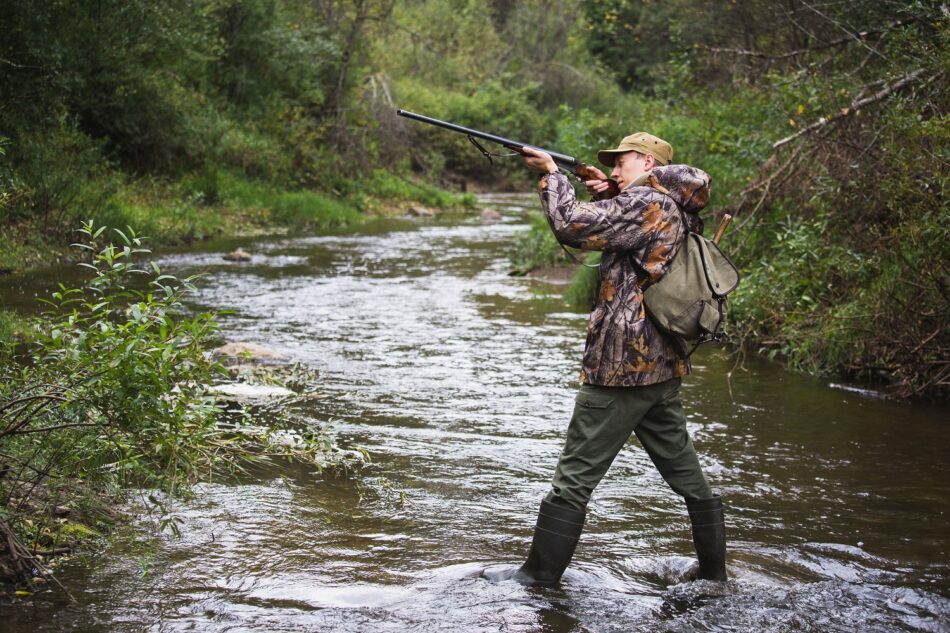Doves rely heavily on water sources to stay hydrated, especially during the early hunting season when temperatures remain high. Unlike other birds that can extract sufficient moisture from their food, doves need open water for drinking. Their feeding habits, which include consuming seeds and grains, increase their dependency on accessible water. Understanding where doves find hydration helps hunters identify prime locations for setting up in the field. Reliable water sources such as ponds, rivers, and stock tanks attract large numbers of doves, making them essential areas for early-season success.
Doves typically drink twice a day, often at sunrise and late afternoon before roosting. During dry conditions, their need for water increases, causing them to visit water sources more frequently. Recognizing these behavioral patterns allows hunters to anticipate movement and establish shooting positions accordingly. A well-planned approach to scouting ensures that hunters make the most of each outing by focusing on areas with consistent dove activity.
Scouting Ideal Locations
Finding productive water sources requires strategic scouting before the hunting season begins. Doves prefer open, shallow bodies of water where they can land easily and access hydration without obstacles. Large lakes or deep rivers are less attractive to doves, as they favor edges with gradual slopes and minimal vegetation. Agricultural areas with nearby stock tanks often provide optimal hunting grounds since doves tend to visit fields for feeding before flying to nearby water sources for hydration.
Observing dove flight paths during morning and evening hours helps identify high-traffic zones. Hunters should look for dusty areas near water sources, where doves gather to clean their feathers and regulate body temperature. These spots often become prime hunting locations, especially in the early season when temperatures remain high. Setting up blinds or natural cover along well-traveled routes improves the chances of a successful hunt. By prioritizing areas with proven dove activity, hunters can maximize their shooting opportunities while minimizing unnecessary movement.
Timing and Hunting Strategy
Early-season dove hunts require precise timing to capitalize on doves’ predictable visits to water sources. Since doves are most active during the cooler parts of the day, setting up before sunrise ensures hunters are ready when the first birds arrive. The afternoon session provides another excellent window as doves return to drink before heading to their roosting sites. Understanding these patterns allows for better positioning and improved shooting accuracy.
When hunting near water sources, maintaining a low profile and using natural cover increases success. Doves have keen eyesight and will quickly detect unnatural movement, making concealment essential. Some hunters opt for portable blinds, while others use existing vegetation to remain undetected. Additionally, positioning with the sun at the hunter’s back reduces glare and enhances visibility when aiming at incoming birds. Ensuring a proper setup near water sources creates the ideal conditions for an effective hunt.
Water Availability and Seasonal Impact
The availability of water sources plays a significant role in dove movement during the early season. In regions experiencing drought, doves concentrate around the few remaining water spots, increasing competition and hunting opportunities. Conversely, in areas with abundant rainfall, doves have multiple options, requiring hunters to adapt by scouting frequently and identifying the most active locations. Recognizing these fluctuations in water availability provides an advantage when planning hunting strategies.
Seasonal changes also affect dove patterns, as their migration is influenced by both temperature and water accessibility. In hotter climates, doves rely heavily on water sources to regulate body temperature and sustain their energy levels. As the season progresses and temperatures drop, their hydration needs slightly decrease, causing them to shift focus toward food-rich environments. This transition underscores the importance of targeting water sources early in the season before doves disperse to alternative habitats.
Maximizing Hunting Success
Understanding the role of water sources during early-season hunts is essential for increasing success rates. Experienced hunters recognize that prime locations near open water consistently attract doves, making them key areas for setting up ambushes. By combining scouting efforts with strategic positioning, hunters improve their chances of consistent action throughout the season.
Hunters participating in hunting in Mission Texas often find that water access determines the best hunting spots, especially when competing with other hunters for productive areas. Identifying secluded water sources that receive less pressure can lead to more rewarding hunts with higher bird counts. Additionally, being adaptable and adjusting based on changing conditions ensures that hunters remain effective regardless of shifting dove movement patterns. Prioritizing water sources early in the season enhances the overall hunting experience and leads to more successful outings in the field.
Preparing for Changing Conditions
As the season progresses, changes in weather and water availability can impact dove behavior significantly. Hunters must stay adaptable by regularly monitoring water sources for fluctuations in activity. Sudden rainfall can create temporary water spots, dispersing doves and requiring hunters to shift locations. Conversely, extended dry spells may concentrate doves in fewer areas, increasing hunting opportunities for those who locate the most active water spots. By staying observant and adjusting strategies accordingly, hunters can maintain consistent success throughout the season.






